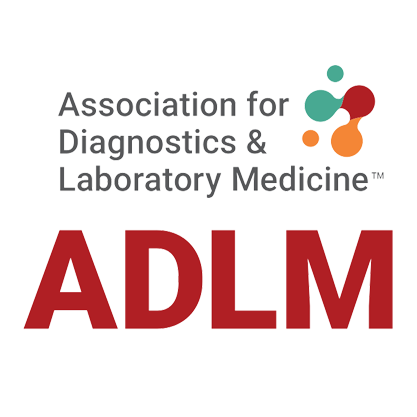All over the planet, women are getting pregnant, over 200 million of them each year. Most of these pregnancies are unintended1. This means two things: a lot of babies, and a lot of surprises. Despite this, some 8% of couples are unable to conceive within two years and are considered infertile. Risk factors for infertility include age, previous medical history (sexually-transmitted diseases, cancer treatment) and obesity.
Fortunately, a wide-range of fertility treatments are now available, although sadly the cost of such treatment is prohibitive for many. Despite this, for those who can access it fertility treatment does work; in the UK the Human Fertility and Embryology Authority reported ~20,000 births in 2016 from ~68,000 treatment cycles.

Much of the success in fertility treatment stems from the use of medications that seek to address fertility issues in individual patients. While this is welcome news, as the number of fertility treatments increases and their use becomes more widespread there is a need for diagnostic test manufacturers to ensure that the tests they develop give the right results in patients taking fertility drugs.
For example, low levels of Progesterone early in pregnancy can be suggestive of increased risk of miscarriage and ectopic pregnancy. A patient with a low result for Progesterone levels may be treated in order to manage this situation and reduce the likelihood of miscarriage or to confirm and manage an ectopic pregnancy. If such patients are also being treated with Clom1fene – not an unlikely scenario for a patient in the early stages of pregnancy – then it would be important to know that the Progesterone test result is not interfered with by the presence of Clom1fene in the patient. Therefore, there is a need within the disease diagnosis industry for material from patients treated with fertility drugs to ensure that diagnostic tests being developed are not interfered with.
During immunoassay development, diagnostic test manufacturers typically test their assays for specificity. They construct a list of potential cross-reacting molecules, and then spike these on an individual basis into human specimens that do not contain the analyte of interest (e.g. Progesterone). They would then test the specimens in the assay to see if any “Progesterone” was detected, expecting a value of zero if the cross-reactant does not interfere with the assay.
Let’s now review some of the drugs used in fertility, all of which have the potential to interfere with diagnostic assays. Logical Biological can provide plasma and serum from individuals in every stage of pregnancy (0-40 gestation weeks) and those treated with medications covered in this article. Do let us know if this would be of interest to your organisation.
Drugs which stimulate ovulation
Clom1fene* (brand name: Clom1d) – a commonly used drug which stimulates ovulation by causing the pituitary gland to release more Follicle-Stimulating Hormone (FSH) and Luteinising Hormone (LH), which it does by blocking estrogen receptors. This stimulates the growth of an ovarian follicle containing an egg.

Gonadotropins – FSH, LH or human Chorionic Gonadotrophin (hCG) strongly stimulate the ovary directly to mature and release eggs. These hormones can be used individually or in combination and are administered by injection. Brand names of this type of drug include Gonal-F, Follistim AQ, Bravelle, Menopur, Ovidrel and Pregnyl.
Metformin (brand names include Glucophage) is used when insulin is the suspected underlying cause of infertility. Metformin helps improve insulin resistance and thus increases the likelihood of ovulation.
Letrozole (brand name: Fermara) is an aromatase inhibitor, developed for use in treating breast cancer, which also serves to stimulate ovulation by decreasing the amount of testosterone converted to estradiol. This reduces estrogen activity and leads to more FSH secretion.
Bromocriptine and cabergoline (brand names: Parlodol and Dostinex) are dopamine agonists which can be used where ovulation problems, such as irregular or absent ovulation, are caused by excess production of prolactin by the pituitary gland (hyperprolactinemia).
Drugs which suppress ovulation
Some drugs are actually used by fertility clinics to suppress ovulation. This could be to prevent ovulation before the eggs can be retrieved surgically for IVF use. Gonadotropin-releasing hormone (GnRH) agonists achieve this and examples include ganirelix acetate and cetrorelix acetate. Brand names include Antagon, Ganirelix, Cetrotide and Orgalutran.
Other fertility medications are GnRH agonists. These stimulate FSH and LH production but then cause the body to stop producing them, allowing control of ovulation. Examples are leuprolide acetate, nafarelin acetate, buserelin and goserelin. These are manufactured under brand names including Lupron, Synarel, Suprecur and Zoladex, which variously may be delivered to the patient by nasal spray, implant or injection.
Other Drugs
Birth control pills (contraceptive pills) may also be used by fertility clinics to enhance response to Clom1d of women with polycystic ovary syndrome. Progesterone may be prescribed for luteal phase defects or recurrent miscarriages. Estrogen may be prescribed to alleviate a symptom of Clom1d, which is a thicker endometrial lining that can interfere with conception.
Conclusions
As technology advances there is a strong trend towards increased uptake of fertility treatments. Diagnostics immunoassay developers should continue to include fertility drugs in their cross-reactivity studies to determine the specificity of their assays.
References
- Global, regional, and subregional trends in unintended pregnancy and its outcomes from 1990 to 2014: estimates from a Bayesian hierarchical model. Bearak J, Popinchalk A, Alkema L, Sedgh G. Lancet Glob Health. 2018 Apr;6(4):e380-e389.
This article should be viewed for general interest purposes only, may not be fully accurate or comprehensive, and should not be considered as medical advice.
*Spelling altered for SEO reasons
Want to hear more from Logical Biological?
Sign up to our newsletter to for the latest updates.
Subscribe Now
